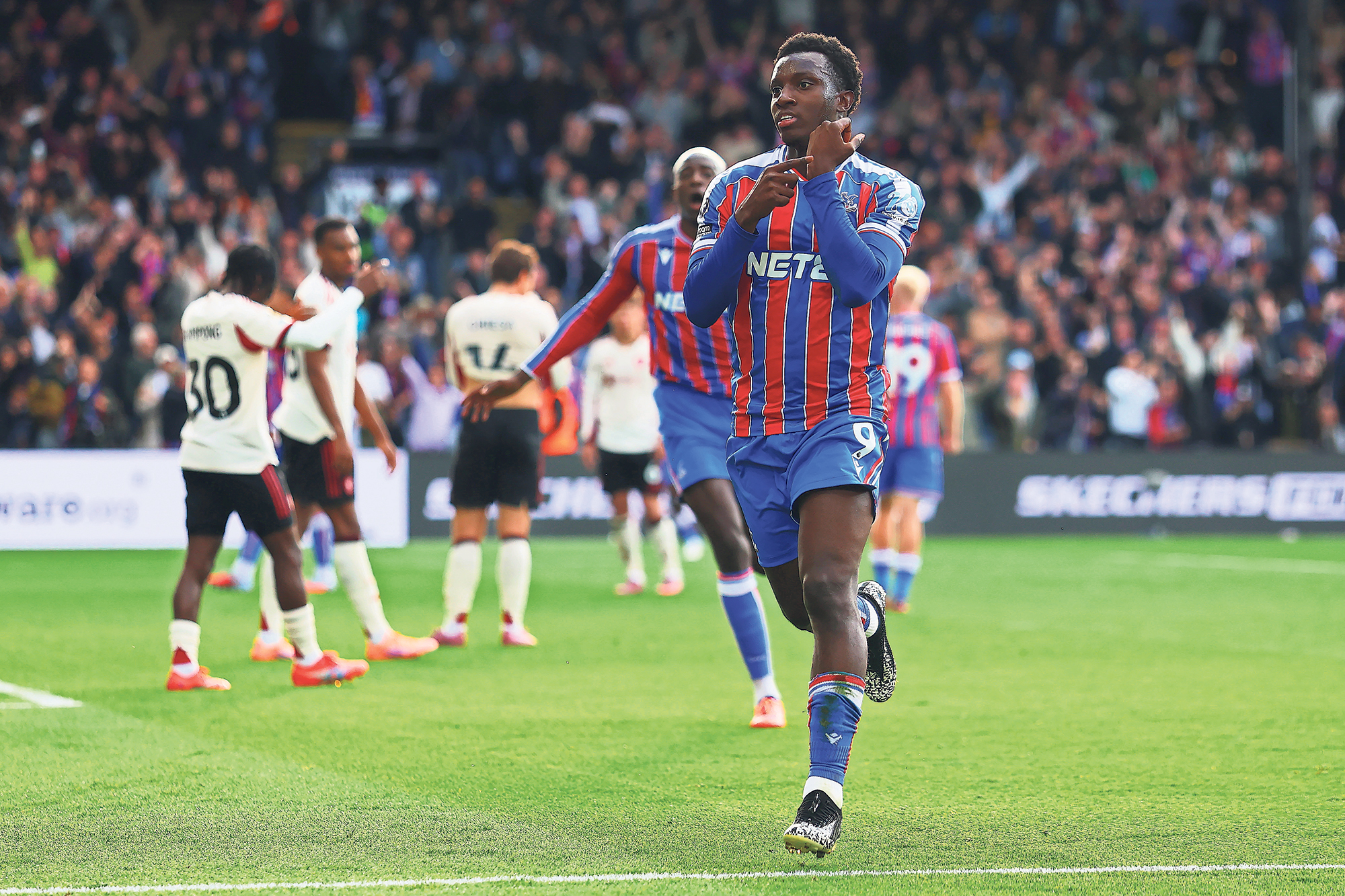The irony, really, is that Martin Tyler may have gone a little too early. Never afraid to give the Premier League’s marketing team a helping hand, the venerable Sky commentator had a deliberate habit of pitching the competition as “the league of late goals”. As he has since admitted, it was a slightly cynical ploy, “a useful phrase to pull out if the game is tailing off a bit”. It was also admirably prophetic.
In the early weeks of this season, the Premier League has more than lived up to Tyler’s billing. Last weekend alone produced eight injury-time goals, including winners for Arsenal, Brighton and Crystal Palace and equalisers for Tottenham and Bournemouth. It was no outlier. The first six rounds of the campaign brought 21 goals after the 90th minute.
The sample size, of course, is still too small to say with any certainty that the pattern will hold. There remains a distinct possibility it is just a phase, a coincidence disguised as a phenomenon, and that in a few weeks or months everything will be back to normal. There are, though, reasons to believe that something more meaningful might be happening, that the league itself has, at last, manifested Tyler’s vision.
Late isn’t what it used to be
Yes, of course, the primary explanation for the rise in late goals is the glaringly obvious one. There are more goals being scored in injury time, in particular, for the simple reason that there is quite a lot more injury time than there once was.
Players, like fans, have become so accustomed to games extending close to 100 minutes that Jack Grealish, when reflecting on Everton’s narrow defeat in the Merseyside derby last month, seemed sincerely baffled that the match officials had played only three added minutes in the second half. “Come on,” he said. “I’ve never seen that in the Premier League in the last two or three years.”
Grealish’s timeline is pretty accurate. The Premier League adopted a more stringent approach to calculating injury time for the start of the 2023-24 season, following a directive from Ifab, the sport’s rule-making body, to try to discourage time-wasting.
The impact was immediate: within three months, the average Premier League game was three minutes longer than it had been the previous year. That brought with it, unsurprisingly, an increase in the number of late goals. In the 2022-23 season, 169 goals were scored after the 80th minute, a figure more or less typical. By 2023-24, that had risen to 252. Last season brought a drop-off, but the overall trend remains. There are more goals later in games because there is more time to score them.
Five live
The arrival of endless periods of injury time is not the only major structural change the game has recently experienced. A year earlier, the league agreed – although not without vocal objections from several of its members – to allow teams to make five substitutions, rather than the traditional three, from the start of the 2022-23 season.
That might have been expected to make late goals more likely, but the impact was the opposite: the number of goals scored after the 80th minute that season dropped drastically, from 201 to 169.
It is not immediately clear why that might have been, particularly as there were more goals being scored in every other period of the game. It could have been the impact of the mid-season World Cup, or that managers were still working out how best to use their extra changes effectively. Or it may have been the case that simply allowing managers more substitutions was not enough to initiate a significant shift. Something else needed to change, too.
The league’s average quality is the highest ever, stronger overall and more competitive
Aurel Nazmiu, Twenty First Group
Quality and quantity
Chasing a point against Wolves last week, Tottenham’s first reinforcement was Brennan Johnson, all £47.5m of him. He was followed in short order by Pedro Porro (£39.7m) and then Wilson Odobert and Pape Matar Sarr (roughly £40m for the pair). When Thomas Frank threw on Mathys Tel, it took the overall cost of Spurs’s substitutes to £157.2m.
That word – substitutes – is an increasingly dirty one in football. Arsenal’s Mikel Arteta prefers to think of his squad in terms of “starters” and “finishers”, a concept borrowed from rugby union, where it was popularised by former England head coach Eddie Jones, but, given the context, probably a necessary adjustment. Like Spurs, most Premier League teams now hold such expensive, celebrated players in reserve that they would not think kindly of being mere replacements. “The average quality of the Premier League is the highest it’s ever been,” said Aurel Nazmiu, a senior data scientist at the consultancy Twenty First Group (TFG). “In turn, that means the players in those teams are of a higher quality; as a result, the substitutes in the current season are higher than the historical average, according to our models.”
It is, in other words, not just that managers are making more substitutions; thanks to the league’s financial power, they are also bringing on better players. TFG’s data bears that out: Premier League teams are creating more late chances this season and converting them at a higher rate. The finishers are no weaker than the starters.
Siege warfare
Andoni Iraola, the Bournemouth manager, did not sound entirely enthused by the fact that “all four goals”, including his team’s 93rd-minute equaliser, came from set-pieces at Elland Road last weekend, but it did at least mean that the game was entirely in tune with this incarnation of the Premier League. This has, so far, been a season of kicking for touch, long throws and endless corners.
It is, then, worth looking at the type of goals being scored late on in games: according to TFG’s analysis, they are less likely to come from open play than in previous seasons. The number of goals coming from corners, on the other hand, has increased.
There have also been more penalties than normal. There has also been a rise in the number of headed chances in the final few minutes of games, Nazmiu said. Teams across the board are much more willing than in previous years to put the ball into the mixer – to use the technical term – throughout the game.
That carries both an immediate threat, but also a compound one; it is difficult to prove beyond doubt, but one of the traditional advantages of an aerial bombardment is that it wears opponents down. One will, eventually, get through.
Living up to the spiel
What made Tyler’s line work, all those years ago, was not so much that it was true but that it was the sort of thing his audience felt hadto be true.
The Premier League has always advertised itself as the place where anyone could beat anyone. It has, at various stages in its marketing cycle, been not just the best but the most unpredictable league in the world.
That may now, at last, be verging on accurate. The increase in late goals does not only illuminate the current vogues of the Premier League; it also, crucially, illustrates its balance. That there has been a glut of late goals is interesting; that so many of them have been decisive in altering a result is telling.
TFG’s research indicates that the “gap between the strongest and weakest teams” in the league is “narrowing”. The league, Nazmiu said, is “not only stronger overall, but more competitive”. The glut of late goals is ample, vivid proof of that.
Perhaps the biggest shift of all is not the extension of injury time or the addition of more substitutions, but the fact that the Premier League has become what it always wanted to be.
Photograph by Tom Dulat/Getty Images

